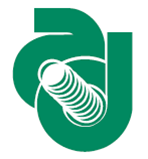Speaker
Dr
Archana SHARMA
(CERN)
Description
Calorimetry, muon detection, vertexing, and tracking will play a central role in determining the physics reach for the High Luminosity (HL) Large Hadron Collider (LHC) Era demanding unprecedented options and R&D efforts necessary to upgrade the current LHC detectors and enabling discoveries. Several detector upgrades are foreseen for the Compact Muon Solenoid (CMS) detector currently operational at the LHC which is expected to have an ultimate luminosity of more than 10$^{34}$cm$^{−2}$s$^{−1}$ at 14 TeV targeted during Phase 1 (the first 10 year period of the accelerator) operation. In this paper, upgrade plans for Calorimetry and the Muon system will be discussed. Due to radiation damage to the active material of the Hadronic Endcap (HE) calorimeters, radiation hard quartz has been proposed. Photodiodes are being replaced by magnetic tolerant and with a better signal to noise ratio. For Electromagnetic Calorimetry (ECAL), the priority is to ensure stable and excellent performance throughout Phase 1 and to provide accurate predictions for performance in Phase 2 assuming no replacement of the ECAL. The muon Drift Tube (DT) system, performance, on the expectations of an adequate operation of the detector at higher luminosity, upgrades for Phase 1 are focused on improving the reliability of the system. The present Resistive Plate Chamber (RPC) detector, which serves as a dedicated muon triggering system, will be augmented with a fourth layer in the endcap region, along with CSC chambers on either side of the CMS detector; the details will be discussed.
for the collaboration
CMS

